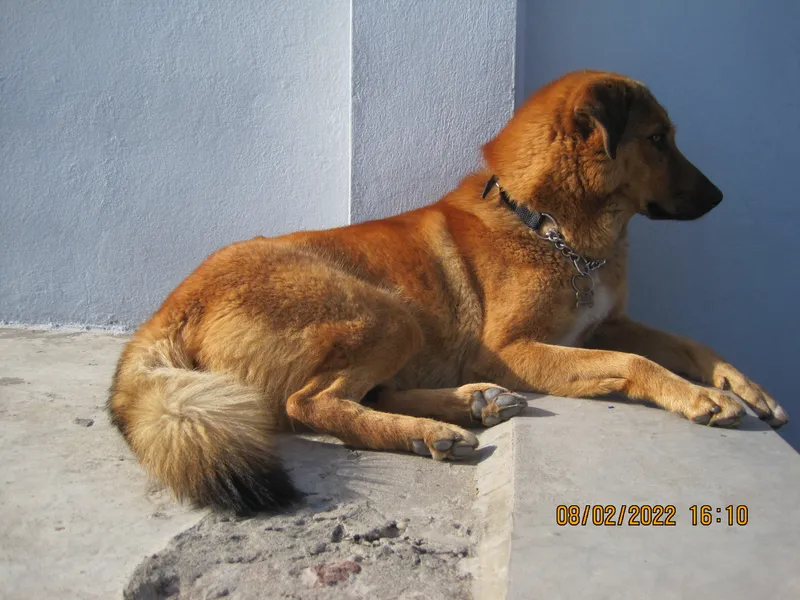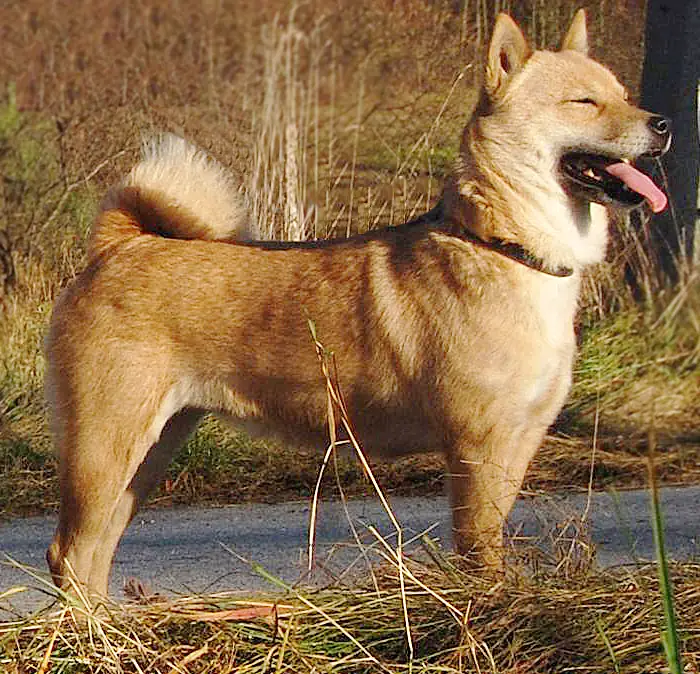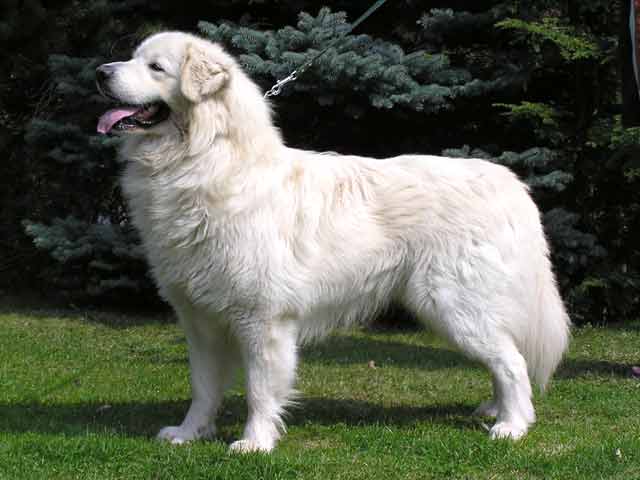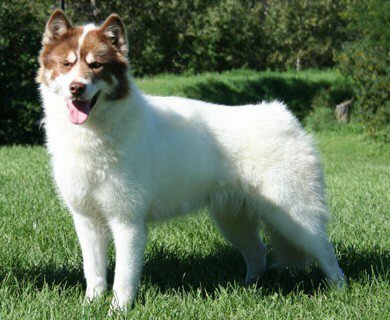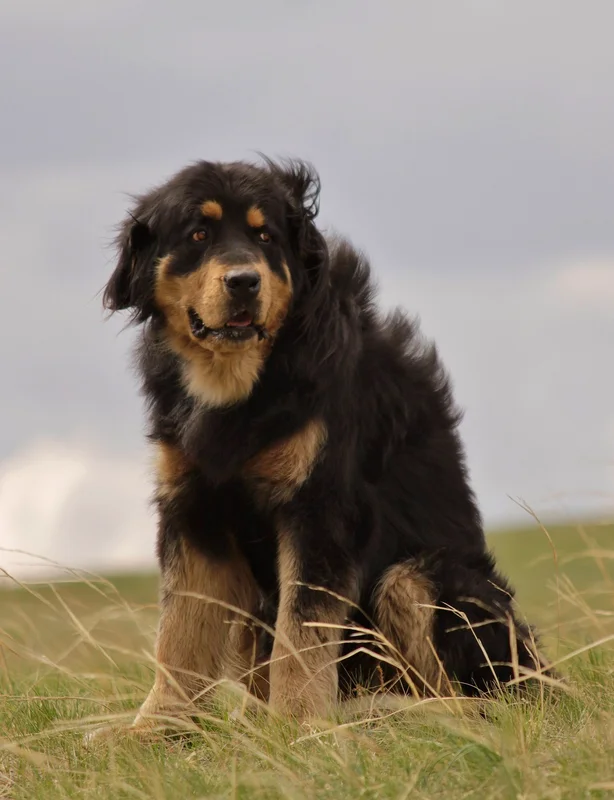Himalayan Sheepdog
The Himalayan Sheepdog, or Bhote Kukur, is a powerful livestock guardian known for its loyalty and protective nature. With a rich history in Nepal and India, this breed thrives in outdoor environments and requires ample exercise. Affectionate with families but wary of strangers, they make excellent companions for active households.
Overview
🐕Breed Overview
✨Key Traits
💡What Makes Himalayan Sheepdog Special
Himalayan Sheepdogs are known for their impressive strength and agility, which make them exceptional guardians of livestock. Their thick double coat provides insulation against harsh weather, allowing them to thrive in cold climates.
This breed is highly alert and has a keen sense of their surroundings, making them effective watchdogs. Their loyalty to their families is unmatched, often leading them to be protective and territorial.
While they can be stubborn, their intelligence allows them to learn and adapt when trained consistently and positively. Their playful nature and love for outdoor activities make them great companions for active families.
The Himalayan Sheepdog, also known as Bhote Kukur, is a robust and powerful breed that has its roots in the rugged terrains of Nepal and northern India. This livestock guardian dog is closely related to the Tibetan Mastiff and Indian Mastiffs, sharing similar physical characteristics and temperaments. With a history steeped in herding and protection, the Himalayan Sheepdog has been a loyal companion to local tribes for centuries, serving as both a guardian of livestock and a family protector.
Their strong instincts and protective nature make them excellent watchdogs, while their affectionate demeanor towards their owners ensures they are cherished family pets. In terms of personality, Himalayan Sheepdogs are known for their loyalty and territorial instincts. They are naturally alert and can be wary of strangers, making early socialization crucial to prevent aggressive tendencies.
Despite their independent streak, they are gentle and affectionate with their families, often forming strong bonds with their owners. Their playful nature and love for outdoor activities mean they thrive in environments where they can roam and explore. Daily living with a Himalayan Sheepdog requires commitment to exercise and training.
These dogs need at least 90 minutes of vigorous activity each day to keep them physically fit and mentally stimulated. They are best suited for homes with large yards or rural settings, as they are not ideal for apartment living. Training can be challenging due to their stubbornness, but with consistent and positive reinforcement methods, owners can successfully teach them obedience and social skills.
Health-wise, Himalayan Sheepdogs are generally robust, with a life expectancy of around 10 years. However, they can be prone to certain health issues, including hip dysplasia, elbow dysplasia, and obesity. Regular veterinary check-ups and a balanced diet are essential to maintain their health.
Overall, the Himalayan Sheepdog is a unique breed that combines strength, loyalty, and a loving nature, making them a wonderful addition to the right family.
🎉Fun Facts
Himalayan Sheepdogs are known for their impressive guarding instincts, often alerting their owners to any unusual activity.
Himalayan Sheepdogs are known to form strong bonds with their families and can be very affectionate with children.
They have a strong prey drive, which can lead to chasing smaller animals if not properly trained.
This breed is often used in rural areas for herding and protecting livestock from predators.
Breed Characteristics
Family & Friends
Good Behavior
Get Up & Go
Household Harmony
Temperament & Personality
✨Key Traits
🐕Core Temperament
The Himalayan Sheepdog is known for its strong temperament, characterized by loyalty, protectiveness, and independence. They are naturally inclined to guard their families and property, making them excellent watchdogs.
While they can be affectionate and gentle with their owners, they may exhibit territorial behavior towards strangers and other animals. Early socialization is crucial to help them develop a balanced temperament.
They are generally good with children, displaying patience and playfulness, but caution is advised around other pets due to potential jealousy or aggression.
💫Personality Profile
The Himalayan Sheepdog is a breed characterized by its loyalty and protective instincts. They are naturally wary of strangers, making them excellent watchdogs.
However, with proper socialization, they can be gentle and affectionate with their families. Their independent nature can sometimes lead to stubbornness, making training a challenge.
They thrive in active environments where they can engage in physical activities and explore their surroundings. Despite their strong guarding instincts, they are known to be playful and enjoy spending time with their families, especially children.
🔊Vocal Tendencies
Himalayan Sheepdogs have a moderate noise level, often barking to alert their owners of any perceived threats or unusual activities. They may bark when greeting visitors, during play, or when they feel their territory is being encroached upon.
While they are not excessive barkers, their vocalizations can be more frequent if they are not adequately exercised or mentally stimulated. Owners should be prepared for some barking, especially if the dog is left alone for extended periods or if they sense unfamiliar people nearby.
Affection & Social Traits
Energy & Activity
Communication Style
Care Requirements
🏃♂️Exercise Requirements
Daily Exercise
The Himalayan Sheepdog is an active breed that requires a significant amount of daily exercise to maintain its physical and mental well-being. Ideally, this breed needs at least 90 minutes of vigorous exercise each day, which can include activities such as long walks, running, hiking, or playing fetch.
Given their herding background, they thrive in environments where they can roam freely and engage in activities that stimulate their natural instincts. Puppies should engage in shorter, more frequent play sessions to avoid overexertion, while adult dogs should have a structured routine that includes both physical and mental challenges.
Regular exercise not only helps manage their weight but also reduces the risk of behavioral issues such as boredom or aggression. Insufficient exercise can lead to destructive behaviors, anxiety, and health problems such as obesity or joint issues.
Preferred Activities
🏠Living & Adaptability
Space Requirements
Himalayan Sheepdogs require ample space to thrive, making them unsuitable for apartment living. They do best in homes with large, securely fenced yards where they can run and play freely.
This breed is accustomed to outdoor lifestyles and needs a safe environment to explore. Owners living in smaller spaces should ensure they can provide sufficient daily exercise and mental stimulation, such as regular trips to parks or open areas.
The breed's size and energy level necessitate a living situation that accommodates their need for movement; otherwise, they may exhibit signs of frustration or anxiety.
Climate Preference
🍲Feeding Guide
Schedule
Food Types
Portion Size
Special Nutritional Needs
Himalayan Sheepdogs require a balanced diet rich in protein to support their active lifestyle. It's important to choose high-quality dog food that meets their nutritional needs, particularly during their growth stages.
Owners should monitor their weight and adjust food portions accordingly to prevent obesity, which can lead to health issues. Regular veterinary consultations can help determine the best dietary plan for individual dogs.
✨Grooming Requirements
Grooming Overview
The Himalayan Sheepdog has a thick double coat that requires regular grooming to keep it healthy and free of mats. Their coat sheds moderately throughout the year, with heavier shedding occurring during seasonal changes.
Owners should brush their dog's coat at least once a week to remove loose hair and prevent tangles. Bathing should be done as needed, typically every few months or when the dog gets particularly dirty.
Regular nail trimming and ear cleaning are also essential to maintain overall hygiene. Special attention should be given to their ears, as they can be prone to infections if not cleaned regularly.
Care Schedule
Brush weekly; bathe every 2-3 months; trim nails every 2-4 weeks.
Health Profile
⚕️Health Care
Regular health care is crucial for the Himalayan Sheepdog's longevity. Routine veterinary check-ups, vaccinations, and preventive treatments can help detect and manage health issues early.
Owners should establish a consistent health care routine that includes dental care, parasite prevention, and regular exercise. By maintaining a proactive approach to health care, owners can significantly enhance their dog's quality of life and lifespan.
Health Issues Overview
⏳Average Lifespan
Genetic Factors
Genetics play a significant role in the Himalayan Sheepdog's lifespan, with hereditary health issues being a concern for the breed. Responsible breeding practices that prioritize genetic diversity can help reduce the risk of inherited conditions.
Potential owners should seek reputable breeders who conduct health screenings and genetic testing to ensure the health of their puppies. Awareness of common breed-specific health issues can also guide owners in making informed decisions about their dog's care and management.
Living Conditions
The Himalayan Sheepdog's lifespan can be influenced by various environmental factors, including housing conditions, climate, and social interactions. Dogs living in spacious, safe environments with ample opportunities for exercise and mental stimulation tend to live longer, healthier lives.
Exposure to harsh weather conditions without proper shelter can negatively impact their health. Additionally, social interactions with humans and other animals can affect their mental well-being, with positive interactions contributing to a happier, more balanced dog.
Owners should ensure their dogs have a secure, comfortable living space and regular access to outdoor activities to promote longevity.
🏥Common Health Issues
Hip Dysplasia
Warning Signs
🔬Diagnosis
X-rays and physical examinations by a veterinarian.
💊Treatment
Surgical options or medication for pain management.
📝Management Tips
Maintain a healthy weight, provide joint supplements, and engage in low-impact exercises.
Elbow Dysplasia
Warning Signs
🔬Diagnosis
X-rays and veterinary assessment.
💊Treatment
Surgery or medication as needed.
📝Management Tips
Weight management and controlled exercise can help.
Patellar Luxation
Warning Signs
🔬Diagnosis
Physical examination and X-rays.
💊Treatment
Surgical correction may be necessary.
📝Management Tips
Weight control and physical therapy can aid recovery.
Arthritis
Warning Signs
🔬Diagnosis
Veterinary examination and X-rays.
💊Treatment
Pain relief medications and physical therapy.
📝Management Tips
Provide joint supplements and maintain a healthy weight.
Glaucoma
Warning Signs
🔬Diagnosis
Veterinary eye examination.
💊Treatment
Medications or surgery to relieve pressure.
📝Management Tips
Regular eye check-ups can help with early detection.
Obesity
Warning Signs
🔬Diagnosis
Veterinary assessment of body condition.
💊Treatment
Dietary changes and increased physical activity.
📝Management Tips
Implement a balanced diet and regular exercise routine.
🛡️Preventive Care
🔬Hip Evaluation
Hip Evaluation assesses the hip joints for dysplasia and other abnormalities, crucial for preventing joint issues in this breed.
📅 Annually after 2 years of age.
🔬Elbow Evaluation
Elbow Evaluation checks for elbow dysplasia, which is common in larger breeds and can affect mobility.
📅 Annually after 2 years of age.
🔬Patellar Luxation Screening
Patellar Luxation Screening evaluates the kneecaps for proper alignment and function, important for maintaining mobility.
📅 Annually after 1 year of age.
🔬Ophthalmic Examination
Ophthalmic Examination checks for eye conditions such as glaucoma and cataracts, which can affect vision and quality of life.
📅 Every 1-2 years, or as recommended by a veterinarian.
🔬Thyroid Testing
Thyroid Testing assesses thyroid function, which can impact metabolism and overall health, especially in older dogs.
📅 Every 1-2 years, or as recommended by a veterinarian.
Training
🧠Intelligence & Trainability
💪Work Drive
Himalayan Sheepdogs possess a strong work drive, stemming from their historical roles as livestock guardians and herders. They thrive when given tasks that challenge their physical and mental abilities.
Activities such as herding exercises, agility training, and obedience drills can keep them engaged and fulfilled. Providing them with jobs to do, whether it's guarding property or participating in dog sports, is essential for their overall happiness.
Without sufficient mental stimulation, they may become bored and exhibit destructive behaviors. Owners should aim to incorporate a variety of activities into their daily routine to satisfy the breed's need for purpose and engagement.
⚠️Training Considerations
Training the Himalayan Sheepdog can present challenges due to their independent and stubborn nature. This breed often exhibits a strong will, which can make obedience training difficult. Common behavioral challenges include reluctance to follow commands, territorial aggression, and jealousy towards other pets.
To overcome these challenges, it is essential to establish a strong bond of trust and respect with the dog. Consistent, positive reinforcement training methods, combined with firm and clear commands, can help in managing their behavior. Socialization from a young age is crucial to mitigate aggression towards strangers and other animals.
Owners should be prepared for a training process that requires patience and persistence, as Himalayan Sheepdogs may not respond well to harsh training methods.
📝Training Tips
To effectively train a Himalayan Sheepdog, owners should focus on establishing themselves as the pack leader through consistent and firm training techniques. Start with basic obedience commands and gradually introduce more complex tasks. Use positive reinforcement methods, such as treats and praise, to encourage desired behaviors.
Repetitive training exercises should be conducted in short sessions to maintain the dog's interest. Socialization is vital; expose the dog to various environments, people, and other animals to help them adapt and reduce territorial tendencies. It's important to remain patient and persistent, as this breed may take longer to learn than others.
Engaging in activities that stimulate their natural instincts, such as herding games, can also enhance their training experience.
History & Heritage
📜Origin Story
The Himalayan Sheepdog, or Bhote Kukur, is believed to have originated in the high-altitude regions of Nepal and northern India, where it has been an integral part of local herding and guarding practices for centuries. These dogs were developed by nomadic tribes who relied on them to protect their livestock from predators such as wolves and leopards.
The breed's robust physique and strong instincts made them ideal for the harsh conditions of the Himalayas, where they navigated rocky terrains and extreme weather. As guardians of both livestock and families, Himalayan Sheepdogs have earned a reputation for their loyalty and protective nature.
Their historical significance is deeply rooted in the culture of the region, where they are celebrated as symbols of strength and resilience. Today, while they remain primarily in Nepal and India, their legacy continues to influence the way local communities interact with these remarkable dogs.
⏳Development History
The Himalayan Sheepdog's development is intertwined with the rugged landscapes of the Himalayas, where they have been bred for centuries to assist local herders. While the exact timeline of their origin remains unclear, it is believed that they have existed since ancient times, evolving alongside the nomadic tribes of the region.
Their lineage is thought to be closely related to the Tibetan Mastiff and Indian Mastiffs, sharing similar physical traits and temperaments. Over time, selective breeding has emphasized their guarding instincts and physical robustness, making them well-suited for the demanding roles they fulfill in their native environments.
Despite their historical significance, the breed remains relatively unknown outside of its native regions, with limited recognition in the global dog community.
🛡️Purpose & Historical Role
Historically, the Himalayan Sheepdog has served as a livestock guardian, protecting herds from predators and ensuring the safety of both animals and humans. Their primary role was to herd and guard cattle, which was vital for the survival of local tribes in the rugged Himalayan landscape.
Additionally, these dogs were utilized for hunting large game, showcasing their versatility and strength. In modern times, they continue to fulfill these roles while also being cherished as loyal companions and family pets, demonstrating their adaptability to various lifestyles.
🏺Cultural Significance
The Himalayan Sheepdog, known locally as Bhote Kukur, holds a significant place in the cultures of Nepal and northern India. Traditionally used by local tribes as livestock guardians, these dogs have been essential in protecting herds from predators in the harsh mountainous terrains.
Their loyalty and protective instincts have made them revered companions in rural communities. The breed's historical role as a guardian has also influenced its portrayal in local folklore and traditions, symbolizing strength and fidelity.
In modern times, they continue to be valued not only for their working abilities but also as family pets, showcasing their adaptability and affection towards humans.
Conservation Status
This breed is less common but has stable populations in certain regions.
